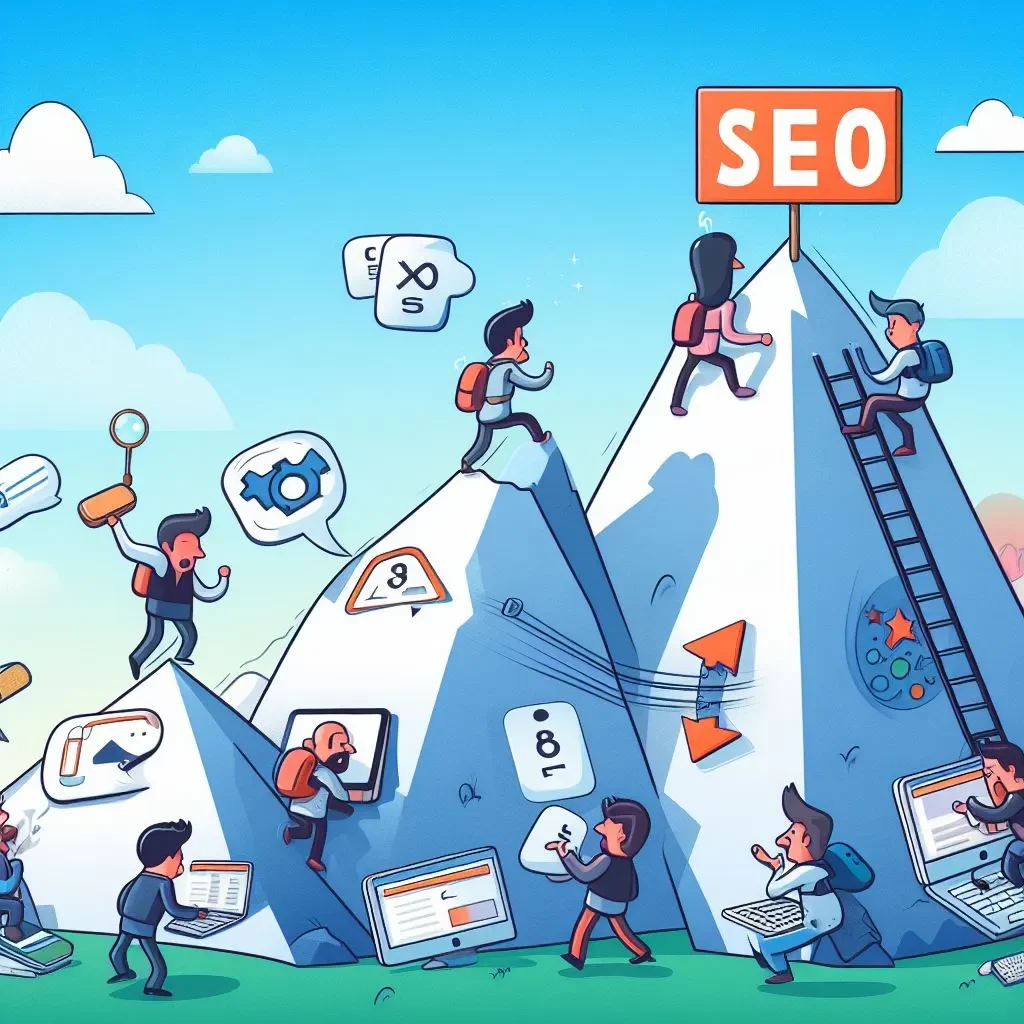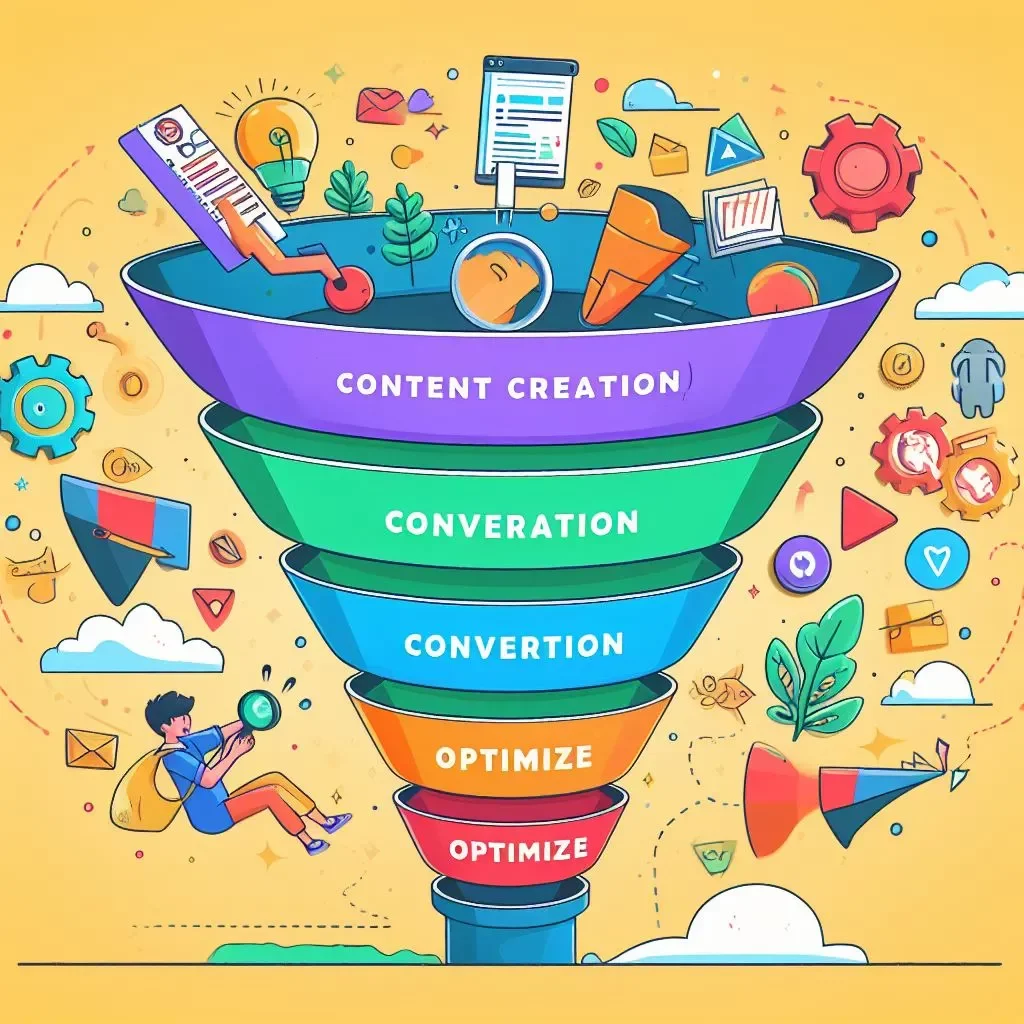Seo for Saas Startups is booming, and projections show it’s not slowing down anytime soon. Predictions indicate a rise to a staggering $195 billion by 2023, underscoring the ever-increasing demand for cloud-based solutions.
The big growth means tough competition, with over 17,000 SaaS brands fighting for a piece of the US market.
In such a crowded field, standing out is essential. To keep your SaaS startup from failing, focus on a strong SEO strategy. To illustrate the power of SEO, let’s take a look at Shopify’s remarkable success story. In early 2020, the company’s valuation stood at an impressive $52.1 billion. In only 20 months, by September 2021, Shopify’s value shot up to $185 billion, growing by 225%. Their powerful SEO strategy played a big role in this success by helping them connect better with their desired audience.
In this comprehensive guide, we’ll help you emulate that success by providing a step-by-step SEO strategy tailor-made for SaaS startups. By following this guide, you’ll not only enhance your visibility in search engine results but also attract high-quality leads that can transform your SaaS startup into the next Shopify.
The Unique SEO Challenges Seo for Saas Startups

SaaS startups encounter a set of SEO challenges that are distinct from those faced by other industries. These challenges can significantly impact their online visibility and growth. Drawing from my experience and various case studies, here are some of the most common challenges:
1. Intense Competition: With the increasing popularity of SaaS solutions, the market is becoming fiercely competitive. Securing higher rankings than your competitors in search results is critical for gaining visibility.
2. Scalability: As SaaS companies rapidly expand their offerings and target new markets, maintaining a scalable SEO strategy becomes challenging. Continuous optimization and adaptation are necessary to keep pace with the company’s growth.
3. Targeting the Right Keywords: Identifying and targeting relevant keywords that align with your company’s products and services can be tricky. It’s not just about finding popular keywords; it’s about identifying the right keywords that your target audience is using.
4. Technical SEO Complexity: SaaS platforms often have complex technical infrastructures, which can create challenges for search engine crawlers. Optimizing website speed, ensuring mobile responsiveness, and handling dynamic content can be demanding.
5. Content Creation and Optimization: Producing high-quality and engaging content consistently is essential for SEO success. However, it’s not just about creating content; it’s about creating the right content that educates, solves problems, and positions your SaaS startup as an industry leader.
6. Building Quality Backlinks: Establishing authoritative backlinks from reputable websites can be challenging, especially for new or lesser-known SaaS companies. It’s not just about acquiring any backlinks; it’s about acquiring the right backlinks that enhance your SEO.
7. User Experience (UX): Delivering a seamless user experience is crucial for both search engine rankings and customer satisfaction. Optimizing website navigation, reducing bounce rates, and enhancing overall UX are ongoing challenges for SaaS companies.
8. Localization and International SEO: SaaS companies expanding into global markets must address localization and international SEO challenges. This involves optimizing for different languages, local search engines, and cultural nuances.
9. Managing Platform Changes and Updates: SaaS platforms often undergo updates and changes, which can impact SEO performance. Maintaining consistency in SEO efforts during these transitions requires careful planning and execution.
Overcoming these challenges demands a strategic and proactive approach to SEO. It involves focusing on continuous improvement, staying updated with industry trends, and adapting to evolving search engine algorithms.
How to Build an SEO Strategy Seo for Saas Startups
Building an SEO strategy for SaaS startups in 2023 revolves around understanding your customers, acknowledging the unique challenges of the SaaS market, and staying abreast of the ever-evolving SEO landscape. It entails a combination of technical optimization, high-quality content creation, strategic keyword targeting, and continuous performance tracking. More than anything, it’s about providing real value to your users, addressing their questions, and helping them solve their problems through your software.
In the following sections, we’ll walk you through a detailed, actionable strategy that will help your SaaS startup stand out in the crowded digital marketplace and achieve sustainable growth.
Identify Jobs to Be Done (JTBD)
The first step in building an effective SEO strategy for your SaaS startup is to identify your customers’ Jobs to Be Done (JTBD). This concept, originating in the field of product innovation, centers on understanding the specific tasks your customers aim to accomplish with your software.
For instance, if you have a SaaS product offering project management solutions, the JTBD for your customers might involve tasks like “organizing project tasks efficiently” or “tracking project progress in real-time.”
To uncover these jobs, consider conducting customer interviews, sending out surveys, and analyzing customer feedback. The objective is to delve into not just what your customers are doing with your product but why they’re doing it. This deep understanding provides invaluable insights into your customers’ needs and enables you to create content that genuinely resonates with them.
Conduct Initial SEO Research
Once you’ve pinpointed your customers’ JTBD, the next step is to conduct initial SEO research. This entails identifying broad topics related to your SaaS offerings and discovering keywords your target audience is likely to use when searching for solutions to their jobs to be done.
For example, if your SaaS product is a project management tool, broad topics could include “project management strategies,” “task tracking methods,” and “efficient project planning.” SEO research tools such as SEMrush or Ahrefs can assist you in finding these broad topics and related keywords.
However, remember that it’s not merely about identifying popular keywords; it’s about pinpointing the right keywords that your target audience uses. This requires a deep understanding of your customers and their language. Revisiting the JTBD and contemplating the exact words and phrases customers might employ when trying to accomplish these jobs can be immensely helpful. Alternatively, exploring platforms like Quora or Reddit can provide insights into the language commonly used by people seeking solutions.
Build Your Content Pillar Pages

With your initial SEO research complete, it’s time to start constructing your pillar pages. These pages serve as comprehensive resources targeting the broad keyword phrases identified in the previous step.
In my experience, the most effective pillar pages are those that serve as a one-stop resource for anyone seeking to understand a particular topic. They are not solely about promoting your product but are primarily focused on delivering genuine value to your readers.
For example, if one of your broad topics is “project management strategies,” consider creating a pillar page titled “The Ultimate Guide to Project Management Strategies.” This page should cover everything a reader needs to know about project management strategies, ranging from the fundamentals to more advanced techniques. It should also include examples and tips on how your SaaS product can aid in implementing these strategies.
Remember, the objective of your pillar pages extends beyond merely ranking for your target keywords; it’s about establishing your SaaS startup as a trusted authority within your field. By consistently providing high-quality, comprehensive resources, you can build trust with your audience and attract more high-quality leads.
Build Your Cluster Pages
Once your pillar pages are in place, the next step is to begin constructing your cluster pages. These are more specific resources that relate to elements of your pillar content. Each cluster page should link back to your pillar page, creating a network of related content that enhances your SEO and provides a comprehensive resource for your readers.
For example, if you have a pillar page centered on “The Ultimate Guide to Project Management Strategies,” consider creating cluster pages addressing topics like “How to Organize Project Tasks Efficiently,” “Tracking Project Progress with [Your Product],” or “Effective Project Planning Techniques.”
Each of these cluster pages delves deeper into a specific aspect of the broader topic, offering detailed, actionable advice for your readers. Through these internal links back to your pillar page, you not only improve your SEO but also guide your readers to more valuable content.
Use Gated Content to Capture Qualified Leads
One strategy I’ve found particularly effective during my years as an SEO consultant is employing gated content to capture leads. Gated content can be a potent tool for both SEO and lead capture, particularly when it’s something as practical and sought-after as templates. Offering templates allows you to rank for “template” keywords and provides a valuable resource for which users are often willing to exchange their contact information.
For instance, if your SaaS product streamlines business project management processes, you could develop a comprehensive guide titled “Effective Project Management Strategies.” Within this guide, include a section showcasing various project management templates, encompassing Gantt charts, project timelines, and task lists.
However, instead of providing the actual templates within the guide, you could offer them as downloadable resources accessible in exchange for users’ email addresses. In this manner, you’re not only delivering valuable content that can help you rank for pertinent keywords but also capturing qualified leads likely to have an interest in your product.
Implement a Content Nurturing Strategy
After successfully capturing leads, it’s crucial to keep them engaged. This is where a content nurturing strategy comes into play. Such a strategy encompasses a series of content pieces designed to keep your leads returning to access a consistent stream of valuable content.
For example, after a lead downloads your project management templates, you might consider creating content offering tips on effectively using these templates. You could also provide additional resources on project management, showcase case studies of businesses that have successfully employed your templates, or present a demo video highlighting your product in action.
The goal of your content nurturing strategy is twofold: to maintain your product at the forefront of your leads’ minds and to guide them gradually toward making a purchase. It’s essential to remember that it’s not merely about selling but also about continually delivering value and building trust with your leads through your website’s content. If you have a newsletter, this is an ideal avenue for reminding your leads about the resources available on your website’s blog section.
Optimize Down-Funnel Content Seo for Saas Startups

As leads progress further down the funnel, their search queries become more specific. They’re no longer merely seeking information; they’re actively searching for solutions. This is where down-funnel content becomes pivotal.
For instance, if you’ve been providing content and resources around project management strategies and templates, your down-funnel content could zero in on how your specific SaaS product can streamline project management processes. You could craft content targeting keywords such for project management”.
This type of content is tailor-made to attract leads closer to making a purchase decision. These leads are already well-informed about the topic, thanks to your pillar and cluster content. Now, they’re actively seeking a product that can help them put their newfound knowledge into practice.
Enact a Link Building Strategy Seo for Saas Startups

Link building is a critical component of any SEO strategy. High-quality backlinks have the potential to significantly boost your brand and website authority, facilitating ranking for more competitive keywords.
In my experience, one of the most effective link-building strategies for SaaS startups involves creating linkable assets. This approach revolves around generating high-quality, unique content that others naturally want to link to.
Consider crafting guides like “Effective Project Management” or reports on “2023 Project Management Trends.”
This type of content delivers value to your audience and establishes your brand as authority in fields, increasing the likelihood of others linking to your content.
It’s important to emphasize that link building places greater emphasis on quality over quantity. Having a few links from reputable, high-authority websites holds more weight than numerous links from low-quality sites.
Invest in a Paid Acquisition Strategy
While organic SEO is undoubtedly powerful, it’s also beneficial to invest in a paid acquisition strategy. Paid advertising can help you reach a broader audience and scale your lead generation efforts.
Consider using platforms like Google Ads to target high-intent keywords related to your product. Alternatively, leverage platforms like LinkedIn Ads to reach decision-makers in your target industries. A well-executed paid acquisition strategy can complement your organic SEO endeavors and significantly enhance your overall results.
Measure, Analyze, and Iterate
In conclusion, it’s paramount to measure your results, analyze your performance, and continually iterate on your SEO strategy. SEO is a long-term endeavor, and what works today may not yield the same results tomorrow.
I recommend establishing a robust analytics system to monitor key metrics such as organic traffic, bounce rates, and conversion rates. Regularly review these metrics to identify trends and areas for improvement.
For example, if you notice that a particular piece of content is driving substantial traffic
but has a high bounce rate, it might signal that the content isn’t meeting visitors’ expectations. In such cases, consider revising the content or adjusting your keyword strategy.
Remember that SEO is an ongoing process, demanding patience and persistence. By following the steps outlined in this guide and continually fine-tuning your approach,
you can achieve sustainable growth for your SaaS startup and secure a prominent position in search engine results.
Need SaaS SEO expertise? Boost traffic, capture leads, and grow revenue together. Craft tailored SEO strategies for your SaaS business objectives.
we can propel your brand to the forefront of search engine results and achieve sustained success within your SaaS niche.
Are you ready to elevate your online presence to new heights? Don’t hesitate – contact me today to schedule a consultation and embark on your journey to SEO success. The top spots on Google await your SaaS startup.
